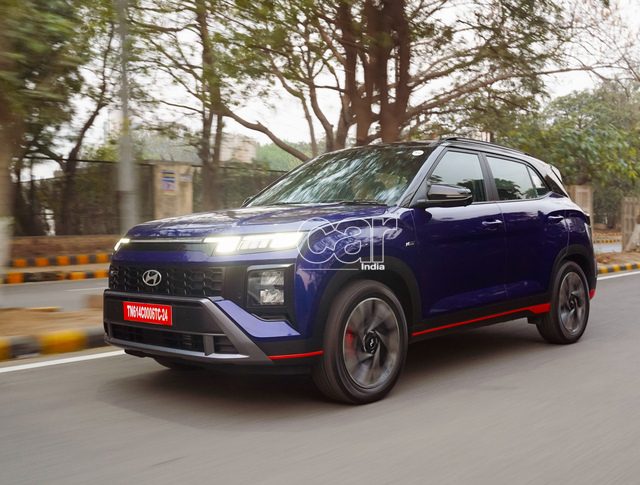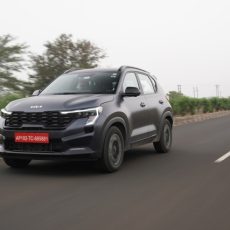 GM Chevrolet’s first offering in 2013, the Sail sedan, promises to be a humble little sedan for the masses. But, will it be so? Let’s find out
GM Chevrolet’s first offering in 2013, the Sail sedan, promises to be a humble little sedan for the masses. But, will it be so? Let’s find out
 WITH THE AVEO, GM INDIA HAD hoped to entrench themselves firmly in the entry-level sedan segment. However, the
WITH THE AVEO, GM INDIA HAD hoped to entrench themselves firmly in the entry-level sedan segment. However, the
car did not achieve the desired results. That didn’t dampen the company’s determination to deliver a strong contender in the segment. Thus in 2013 the first product from GM India to dazzle the audience is an entry-level sedan. Readers may remember the Chevrolet Sail U-VA hatch from last month’s issue and this month we bring you the road test of the sedan version of that very car. Ladies and gentlemen, presenting the car that GM hope will turn their fortunes around in the entry-level sedan segment: the Sail sedan.
 One look at the front and it’s very difficult to spot the difference between the hatchback and the sedan, but move to the side and there it is – a perfectly amalgamated boot section that looks proportionate and in-sync with the overall design. And the Sail sedan actually looks better than some of the cars in its segment. I will not talk much about how the car looks as we have already discussed that in the road test report of the hatch and since the sedan is based on the same hatch, there is no point in repeating it. But one thing that I would like to stress is the rear end of the car, particularly the boot section.
One look at the front and it’s very difficult to spot the difference between the hatchback and the sedan, but move to the side and there it is – a perfectly amalgamated boot section that looks proportionate and in-sync with the overall design. And the Sail sedan actually looks better than some of the cars in its segment. I will not talk much about how the car looks as we have already discussed that in the road test report of the hatch and since the sedan is based on the same hatch, there is no point in repeating it. But one thing that I would like to stress is the rear end of the car, particularly the boot section.
 In the past we have seen experiments from various manufacturers who have tried to turn a hatch into a sedan. And, honestly, some of the results of such experiments have not really been that hot in terms of looks. But the designers
In the past we have seen experiments from various manufacturers who have tried to turn a hatch into a sedan. And, honestly, some of the results of such experiments have not really been that hot in terms of looks. But the designers
and engineers at GM India have got it right in respect of the Sail sedan. They have skilfully combined the extended boot with the hatch body, which has given the car a proper sedan look. The overall length of the car now stands at 4,249 mm, an increase of 303 mm over the hatch, meaning more space for your luggage. The sedan shares its wheelbase with the hatch and most of the internal dimensions such as the legand knee-room are almost identical. This means that it is quite spacious inside and that is exactly what GM India were aiming for and got it right as well.
 The interior has been carried over from the hatch and there is nothing new that will excite you when you are seated
The interior has been carried over from the hatch and there is nothing new that will excite you when you are seated
inside the car. But again everything inside the Sail is neatly laid out and comfortable. The seats are wide with ample
overall support and the interior space is quite good. However, the plastic quality could have been a bit better. Overall, the Sail sedan is quite a decent looking car with a perfectly amalgamated boot and a lot of interior space.
 Many had expected the Sail sedan to be equipped with a bigger and more powerful engine, but the company has retained the 1.3-litre, FIAT-sourced, Multijet engine that powers the hatch. It produces 78 PS of power and 250 Nm of
Many had expected the Sail sedan to be equipped with a bigger and more powerful engine, but the company has retained the 1.3-litre, FIAT-sourced, Multijet engine that powers the hatch. It produces 78 PS of power and 250 Nm of
torque and is mated to a five-speed manual transmission. We have tested a lot of cars with this very engine and only a few manufacturers have been able to get it right for a city car, GM being one of them. The engineers have tuned this motor for low and mid range power, which is delivered in a civil way rather than in an abrupt surge of power. It comes in at low RPM and builds up gradually. But the refinement levels are not really good and the NVH levels at high speed don’t really put a smile on your face.
 During our city run the car performed well, especially at lower speeds while negotiating congested city streets. The
During our city run the car performed well, especially at lower speeds while negotiating congested city streets. The
power kicks in from as low as 1,000 revolutions per minute and thanks to that you can accelerate quite easily. Plus the five-speed gearbox is configured quite well, making the shifts a smooth affair. During the performance testing, the Sail sedan yielded a 40-80 km roll-on figure of 7.48 seconds in the third gear, which is quite respectable for a car of this size.
 You would enjoy driving it in the city. On the highway, however, the car disappoints a little. It clearly feels underpowered and you have to shift down in order to overtake. Plus the taller fourth and fifth gears take a lot of
You would enjoy driving it in the city. On the highway, however, the car disappoints a little. It clearly feels underpowered and you have to shift down in order to overtake. Plus the taller fourth and fifth gears take a lot of
time to propel the car to speeds over 100 km/h. We got a time of 17.32 seconds while doing the 0-100 km/h acceleration test. In the end, this diesel motor is quite good when it comes to city performance, but on the highway you feel the need for more power.
 Handling and ride quality are areas that the engineers have got almost right. I say almost, because at high speeds the
Handling and ride quality are areas that the engineers have got almost right. I say almost, because at high speeds the
dynamics of the car could have been a bit better. Anyway, at lower speeds the car is really easy to drive and the light
steering makes changing direction quite an effortless activity. The McPherson struts up front and the semi independent suspension set-up at the rear of the Sail sedan lend it a comfortable ride at low to cruising speeds. This set-up also gobbles up road undulations with utmost ease. However, once the speedo needle starts climbing to triple-digit speeds, the feedback from the steering reduces and it feels disconnected. The suspension set-up handles rough patches pretty well at high speeds, though you can feel the vibrations and noise creeping into the cabin. And in corners body-roll is quite evident and sometimes it does dampen your confidence to push the car a bit harder. At cruising speeds the car feels better than at high speeds, which is pretty good as not many of us would be travelling at high speeds all the time. Overall, the Sail sedan is a well handling car with a decent ride quality.
 Space and driveability were the two main points that GM concentrated on while developing the Sail and, to be honest,
Space and driveability were the two main points that GM concentrated on while developing the Sail and, to be honest,
they have hit the nail on the head to some extent. The Sail sedan has a lot of interior space with a generous boot and its driveability is also quite good when it comes to city driving. However, on the highways it’s not as spirited as you might expect it to be. But an overall fuel efficiency figure of 15.25 km/l is enough to lift your spirits. The Sail sedan was meant to be a good city car and that is what it is. But with its price still undisclosed, it is really hard to say whether it is a valuefor-money option or not. If GM get the price right, it will definitely give the company a strong hold in the entry-level sedan market.
We also tested the petrol version of the Sail sedan. Please flip over to find out how good the petrol Sail sedan feels.
 THE PETROL VARIANT
THE PETROL VARIANT
THE SAIL PETROL IS POWERED BY A 1.2 LITRE INline four-cylinder engine that develops a peak power output of 86 PS at 6,000 RPM and a peak torque of 113 Nm at 4,400 RPM. At idle, the engine is very quiet and you can barely
make out that the engine is turning over and the car is not switched off! Engage first gear and the car sets off, with low-end performance not particularly perky but not too bad either.
Higher up in the gears, the performance – or the lack of it – becomes only too apparent. The car struggles to pick up speed beyond first gear, and fast driving and overtaking are a chore! The 0-100 kph sprint is dispatched in a wheezing 15.98 seconds. The Sail U-VA petrol is no sports hatch, and the sedan’s performance suffers even more thanks to the added weight of the boot. The engine therefore needs to be kept ‘on the boil’ i.e. running at high revs to extract reasonable performance, and this takes its toll on the fuel consumption. The car is longer than the 4-metre limit for small cars and thus does not qualify for any excise benefit, and a more powerful engine to handle this heft is sorely missed. This most certainly is not a car that can be driven in a hurry, and it suits only those drivers who have a relaxed, laidback driving style.
GM cars have in the past been criticized for high fuel consumption and there were hopes of good results on this front
from the Sail. However, figures of just 9 kpl in the city and 14 kpl on the highway are a disappointment, especially considering that most engines of this capacity offer much better fuel economy. An overall figure of 10.25 kpl coupled with a fuel tank holding 42 litres makes for a driving range of 430 km
The Sail sedan has a lot of interior space with a generous boot and its driveability is also quite good when it comes to city driving
Story: Ravi Chandnani
Photography: Sanjay Raikar




